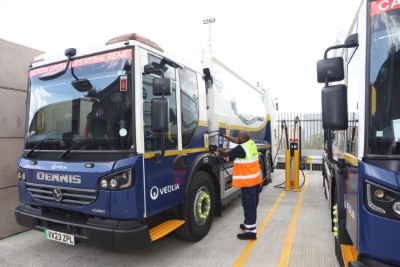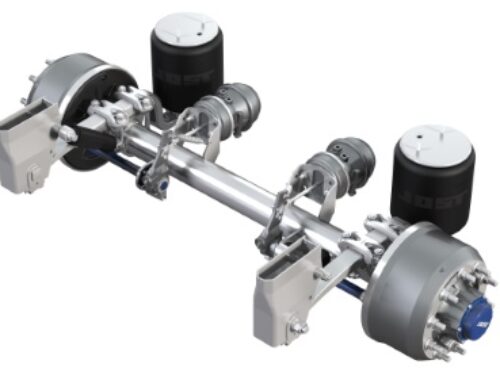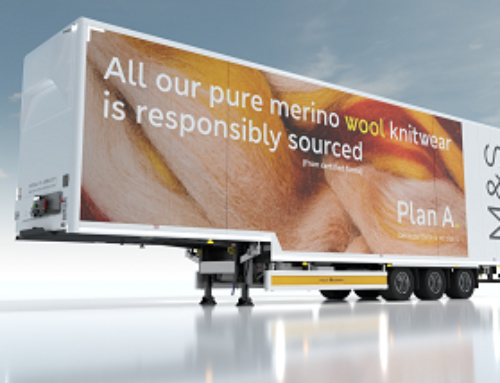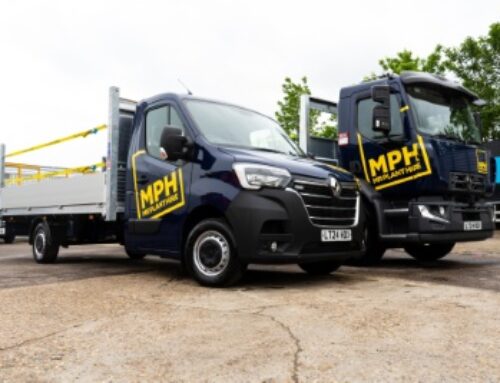Charging ahead with V2G
 Rolf Bienert, managing and technical director at OpenADR Alliance, asks whether CV electrification could drive energy flexibility
Rolf Bienert, managing and technical director at OpenADR Alliance, asks whether CV electrification could drive energy flexibility
HGVs are responsible for almost a quarter of CO2 emissions from road transport in the EU, according to data from the European Environment Agency, with emissions in the commercial vehicle sector increasing year-on-year.
While figures for the UK vary, a new report from the Green Finance Institute (GFI) released last year showed that although HGVs account for just one per cent of vehicles on UK roads, they are responsible for around 20 per cent of all transport emissions.
Alongside strategies like route optimisation and improving the efficiency of vehicles and fuel technologies, electrification will be critical to reducing the impact of the sector on the environment. According to the GFI report, published just before Cop28, electrifying all HGVs would be the equivalent of removing 12 million cars from the road.
The fact is that greener vehicles are already available, with more coming onto the market over the next few years, driven on by the government’s plans to phase out sales of diesel HGVs. By installing charging infrastructure, with high-speed charge points at depots, motorway service stations and rest stops right across the road network, the UK’s entire fleet of HGVs could be decarbonised.
Vehicle to grid opportunities
But why stop there? With the infrastructure in place, is there then an opportunity to take these efforts to the next level by looking at the potential for vehicle to grid or V2G?
V2G harnesses the power from a vehicle to the grid, requiring bi-directional energy flow from the charger to the vehicle and bi- or unidirectional flow from the charger to the destination, depending on how it’s being used.
This idea is already being successfully piloted in the passenger car sector with car manufacturers like Ford working alongside utilities (currently in the US) to optimise the potential for energy flexibility.
While the UK government has added an electric heavy goods vehicle (eHGV) project to its funding scheme for supporting V2X (vehicle to everything) technology projects – and with demos already out there – they are not yet ready for full commercial deployment.
But with their much larger battery packs, commercial vehicles are well-suited to V2G. For a start, they congregate in large numbers at transport depots where they can be charged at a cheaper rate during certain times of the day or overnight, while discharging energy back to the grid when demand is high.
In this way, fleets become energy storage assets, delivering greater energy flexibility but also offering commercial operators the chance to make money by selling energy back to the grid.
Meeting the challenges head on
While we know projects exploring the feasibility of V2G in the passenger vehicle sector are ongoing, those in the commercial space are more limited as operators tend to be risk averse and fleets are relatively small.
Electrifying commercial vehicles is accelerating as new technology and electric models becomes available, but the sector still faces challenges. This is due in part by distances travelled.
But also, because they congregate in large numbers, electrification can be affected by access to the right charging infrastructure, while the impact on energy systems is still an unknown and certainly more complex than passenger vehicles.
To make it a reality, the technology needs to be in place first to ensure there is a stable, reliable and secure supply of power. Fleet owners also need to factor in potential additional costs, including invertors for charging and discharging the power.
The concept of bi-directional charging means that vehicles will need to be designed with bi-directional power flow in mind and Electric Vehicle Supply Equipment (EVSE) will have to be upgraded as Electric Vehicle Power Exchange Equipment (EVPE).
Open communications standards will be also critical to the success of projects, and to ensure the charging infrastructure for V2G commercial use cases is fit for purpose.
But commercial vehicle operators must also want it. The industry – and government through various initiatives and funding schemes to support projects – is looking to educate the commercial sector about the benefits, but will this be enough? It needs a unified message across the board, from vehicle manufacturers to government and industry to promote new greener energy initiatives.
It’s encouraging to see successful V2G trials in the UK like the recent one from waste operator Veolia. The first stage was completed in January, with Veolia planning to electrify all of its collection vehicles by 2040. If all these vehicles were also V2G compatible, this could provide 200MW of daily flexible power capacity to the grid.
As an industry body focused on driving communications standards for EV charging infrastructure, we have supported more than 40 EV managed charging companies worldwide, but we are now seeing a new wave of market entrants, like Wevo Energy Ltd, which has a particular focus on innovative models for supporting commercial fleet charging.
These are moves in the right direction. I look forward to seeing future developments.











